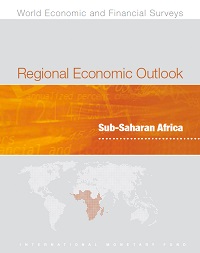Sub-Saharan Africa
Multispeed Growth
October 2016

Economic growth in sub-Saharan Africa this year is set to drop to its lowest level in more than 20 years, reflecting the adverse external environment, and a lackluster policy response in many countries. However, the aggregate picture is one of multispeed growth: while most of non-resource-intensive countries—half of the countries in the region—continue to perform well, as they benefit from lower oil prices, an improved business environment, and continued strong infrastructure investment, most commodity exporters are under severe economic strains. This is particularly the case for oil exporters whose near-term prospects have worsened significantly in recent months. Sub-Saharan Africa remains a region of immense economic potential, but policy adjustment in the hardest-hit countries needs to be enacted promptly to allow for a growth rebound.
Contents
Executive Summary
Chapter 1: Multispeed Growth
- Still an Overall Difficult Environment
- A Tale of Two Africas
- In Search of Financing
- Delayed Policy Adjustment
- Protracted Lower Growth, Rising Risks
- Read Chapter 1
Chapter 2: Exchange Rate Regimes in Sub-Saharan Africa: Experiences and Lessons
- Evolution of Exchange Rate Regimes in Sub-Saharan Africa
- Macroeconomic Performance Under Alternative Regimes
- Exchange Rate Regimes and Fiscal Discipline
- Policy Considerations and Concluding Remarks
- Read Chapter 2
Chapter 3: Enhancing Resilience to Natural Disasters in Sub-Saharan Africa
- Natural Disasters in Sub-Saharan Africa
- Structural Factors Affecting the Impact of Natural Disasters
- The Economic and Social Impacts of Natural Disasters
- The Challenges Posed by Climate Change
- Policy Responses to Natural Disasters and Climate Change
- Conclusions
- Read Chapter 3
Statistical Appendix
- Unless otherwise noted, data and projections presented
in this Regional Economic Outlook are IMF
staff estimates as of 21 September, 2016, consistent
with the projections underlying the October 2016
World Economic Outlook. The data and projections cover 45 sub-Saharan
African countries in the IMF’s African Department.
Data definitions follow established international
statistical methodologies to the extent possible.
However, in some cases, data limitations limit
comparability across countries.
Read Statistical Appendix
Publications of the IMF Africa Department, 2009-16
- Books and monographs, departmental papers, policy papers, staff discussion notes, and working papers.
Read list of Publications


